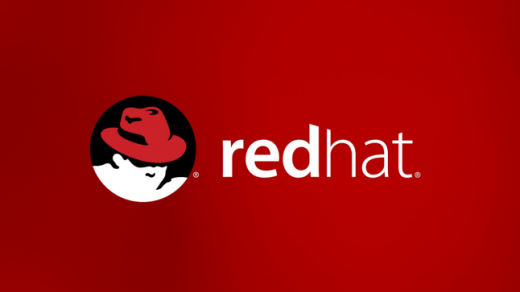
In the previous post, we covered the process of installing Satellite 6.4 on a Red Hat Enterprise Linux 7 Server. In this article, we will be going over the initial steps required to prepare Satellite to manage RHEL 7 servers.
Steps for initial Satellite Server setup.
- Logging into the GUI
- Setting up the initial subscription manifest
- Importing the manifest into Satellite
- Activating the required repositories to sync
- Performing the initial repository sync
- Setting up a daily sync plan
Initial login to the Satellite 6.4 GUI
As you recall, from the previous example you provided with the URL on the Satellite GUI upon completion of the satellite-installer command. This will be the fully qualified domain name of the server. In our case that was https://sat64.home.therootuser.com. If you try to access the URL and find you are unable to, the most likely reason is you have forgotten to add the appropriate firewall rules. The connection is via https, and as it is a

Verify your organization and location
When we set up the server we specified the default Organization and Location. If you did not do this during installation you will want to create your default organization and location within the GUI for your initial setup of Satellite. You will also see there is an option for Default Organization and Default Location. These are generic place holders when nothing was specified, and generally, you would not want to use those.

Creating the subscription manifest for Satellite
In order for Satellite to function properly, you need to assign Red Hat entitlements that you have available to your manifest. This will allow servers that register with Satellite to obtain the appropriate entitlement for that server type, and thus be able to obtain the required patches. You can do this by either purchasing the required amount of entitlements from Red Hat or if you already have them removing them from your already registered servers within the Red Hat portal. You will then register those servers with Satellite instead of via the Red Hat portal. By doing this Satellite will be managing the entitlements and patch management of those servers rather than the Red Hat customer portal as before.
Starting at the Customer Portal
We start this process by going to https://access.redhat.com. In your account choose subscriptions, which will show you all the active subscription contracts within your organization.

We then want to create our manifest, so choose Subscription Allocations from the top menu, and give your manifest a name that has meaning for you and your organization. Choose the Satellite type, which in our case is Satellite 6.4.

Adding our subscriptions
You are then brought to the next screen where you can see the details of your manifest, as well as a tab for subscriptions. Click on the subscriptions tab and choose the entitlements you wish to add. You will pick the number you wish to attach, and then

Importing the manifest into Satellite 6.4
Now that we have our manifest it is time to import it into Satellite. You will do this by going to Content > Subscriptions. Then choose Import a Manifest in the middle of the screen. If you need to update or change your manifest in the future, you can return to this screen and choose Manage Manifest instead to either refresh or replace the manifest completely. When you choose Import a Manifest a pop-up dialog box will come up, and ask where your manifest is located. Point to where you downloaded your manifest and then upload it.

Once you specify the location the manifest will begin to import. This will take a little time, so just be patient while it does its thing.

When the import process is finished you will be brought back to the main screen, this time you will see your subscriptions, as well as how many are currently consumed, as well as the total number of entitlements. In my example you can see that 0 are consumed, and we have a total of 5 available.

Attaching required RHEL repositories
Now that we have entitlements, the next core item that is required is repositories so you can both provision servers and patch managed servers within your Satellite

Look for the yellow star.
Another thing that will help is looking for the yellow star icon. This was next to the Red Hat Enterprise Linux 7 Server RPMs. Hitting the

Finally, just click on the plus button, and it will move over to the Enabled Repositories side of the screen.

Do not forget the Satellite Tools
We also want to grab Satellite Tools, as this will be needed to manage the RHEL servers with our Satellite server. Just type in RHEL-7-server-satellite-tools-6.4-

Click on the plus for this RPM as well, and you will see it added along with our RHEL 7 repositories. These are the minimum repositories that we will need to manage our servers. You will want to add any other repositories that any of your servers will require. With the use of content

Syncronizing the repsitories
At this point, we have just told Satellite these are the repositories that we wish to use. The actual repo data is not on the Satellite server just yet. This will require a initial sync to obtain this information. We start this process by going to Content > Sync Status. Then you can expand all to view all your

Once they are all selected, or at least the ones you wish to start syncing at this time, choose Synchronize Now. Satellite Tools will go fairly quickly as it is just 25.7 MB. RHEL 7 is over 30 GBs however, so will take time, and can take 30 minutes to a few hours depending on network speed and disk speed of your server. If you have many repositories this initial process is going to take some time. Subsequent syncs will go much faster as it will just gather what is new instead downloading all repositories at once.

Once the sync is finished you will see a Syncing Complete notification on all your repositories. As you can see with my lab example, it took 2 hours to sync the RHEL 7 repositories. Therefore, plan accordingly during your initial setup of Satellite phase.

Setting up a daily sync plan
Now our

Give your sync plan a descriptive name, as well as add a description as to what it does. Pick your interval, I went with daily, when you wish the sync plan to start, and what time (based on a 24-hour clock). I like setting mine early in the morning when other network traffic will be low. Once everything looks good, choose Save.

Once done, you will then get to choose what products will be attached to this sync plan. You can have different plans for different products based on how often you need those to update. To add the products, choose the product tab, then choose add, check the product you wish to add, then choose Add Selected.

Once you have done this you will see your sync plan, when the original sync date was, what the interval is, and when the next sync time will be. You can see in this example, the next sync time will be April 23rd at 1 am.

What is next?
Our initial setup of Satellite server is now configured for basic usage at this time. You could register servers to it now, and have Satellite provide updates to them with no further configuration if you so wish. Usually, however, you will want to configure more settings though to have Satellite fit within your organization. This includes things such as setting up Content Views, Host Groups, configuring your Infrastructure with Subnet information, and adding users and user groups for allowing others to manage certain aspects within Satellite. Future articles will cover each one of those in more detail as we continue working toward our end goal of provisioning



Excellent article, You help me a lot!
Excellent article, thanks a lot
Really Excellent and detailed explanations which is real time solution.
I could successfully configured to my Environment.
Thanks a lot !!!!!